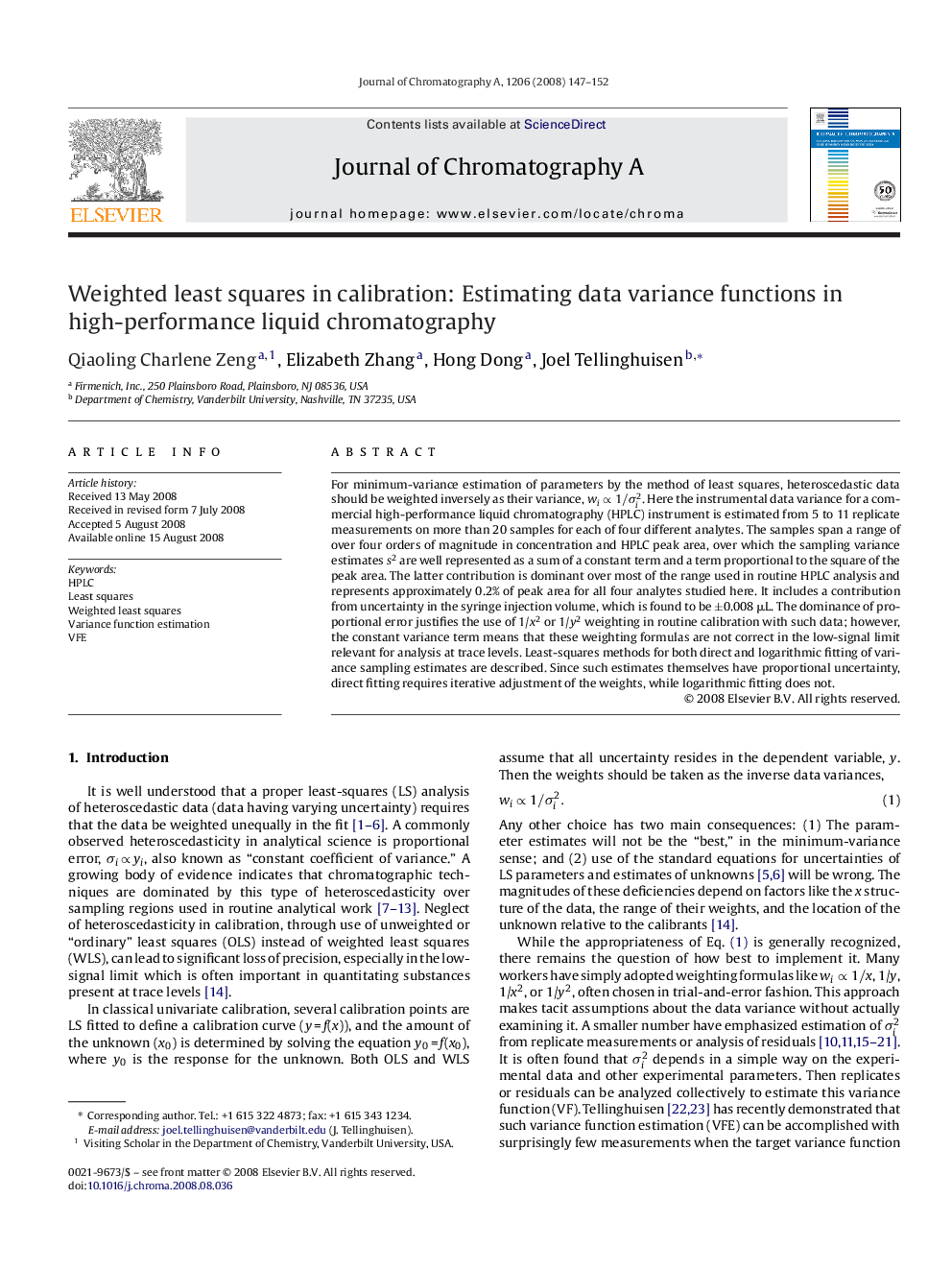| Article ID | Journal | Published Year | Pages | File Type |
|---|---|---|---|---|
| 1207358 | Journal of Chromatography A | 2008 | 6 Pages |
For minimum-variance estimation of parameters by the method of least squares, heteroscedastic data should be weighted inversely as their variance, wi∝1/σi2. Here the instrumental data variance for a commercial high-performance liquid chromatography (HPLC) instrument is estimated from 5 to 11 replicate measurements on more than 20 samples for each of four different analytes. The samples span a range of over four orders of magnitude in concentration and HPLC peak area, over which the sampling variance estimates s2 are well represented as a sum of a constant term and a term proportional to the square of the peak area. The latter contribution is dominant over most of the range used in routine HPLC analysis and represents approximately 0.2% of peak area for all four analytes studied here. It includes a contribution from uncertainty in the syringe injection volume, which is found to be ±0.008 μL. The dominance of proportional error justifies the use of 1/x2 or 1/y2 weighting in routine calibration with such data; however, the constant variance term means that these weighting formulas are not correct in the low-signal limit relevant for analysis at trace levels. Least-squares methods for both direct and logarithmic fitting of variance sampling estimates are described. Since such estimates themselves have proportional uncertainty, direct fitting requires iterative adjustment of the weights, while logarithmic fitting does not.
